By Robert L. Reid
A pair of massive steel trusses — 700 ft long and roughly 35 ft tall — will help protect the upper floors of the Honorable Frank J. Guarini Justice Complex in Jersey City, New Jersey, from a possible progressive collapse in the event of an explosion.
Scheduled to open next year, the Guarini justice complex will be a five-story, 405,000 sq ft building with an adjoining six-story parking garage and a one-and-a-half-story entrance building that will house offices for the Surrogate Court — involving wills and estates — and other judicial functions.
Erected on a site near the historic William J. Brennan Hudson County Courthouse, the new justice complex will replace the outdated Hudson County Administration Building, which was constructed in 1957, says Liam J. McNamara, P.E., a senior associate at O’Donnell & Naccarato, the Philadelphia-based firm leading the project’s structural engineering.
One complex, two structures
The justice complex is essentially two separate structures — a three-story building with one basement level and a two-story building atop that structure, explains McNamara. The first three levels feature 24 courtrooms and other public facilities. The two upper levels provide offices for judges, prosecutors, law clerks, and others.
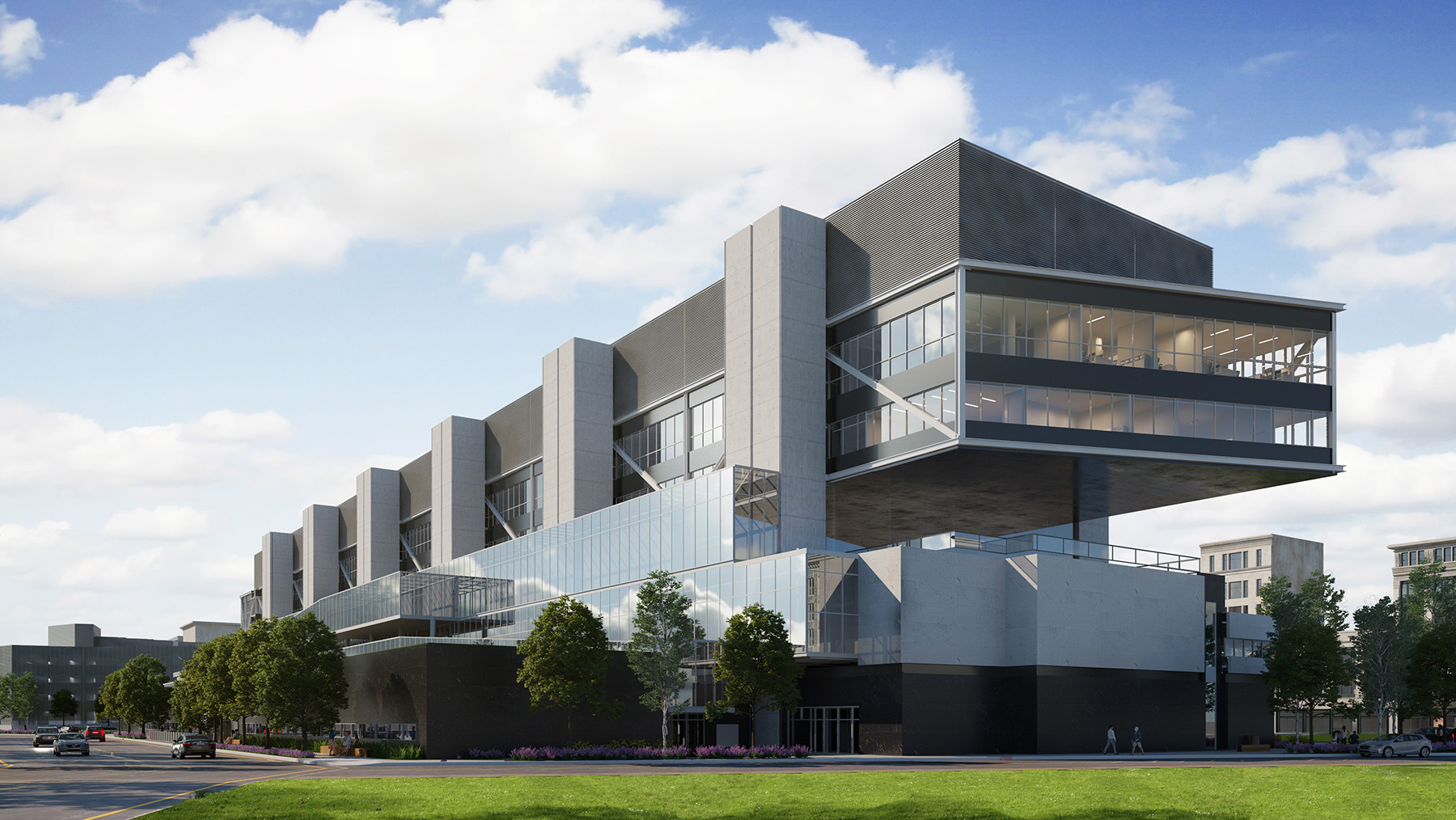
To prevent the possibility of a progressive collapse of the entire structure, the upper two levels and the roof, which houses mechanical systems, are suspended from giant trusses that are supported on either concrete cores or large concrete columns, McNamara says.
None of the steel framing for the lower three floors continues up to the fourth and fifth floors. Thus, “in the event that a large, disastrous explosion would happen on the lower floors, there’s mitigation of (a possible) progressive collapse,” to avoid what destroyed the Alfred P. Murrah Federal Building in Oklahoma City in 1995, McNamara says.
The trusses feature large W14 members, ranging from W14 x 233 up to W14 x 730, and asymmetrical cantilevers. The truss on the south elevation of the building has an 80 ft cantilever on the west side and a 35 ft cantilever on the east side, whereas the truss on the north elevation has a 50 ft cantilever on both the east and west sides.
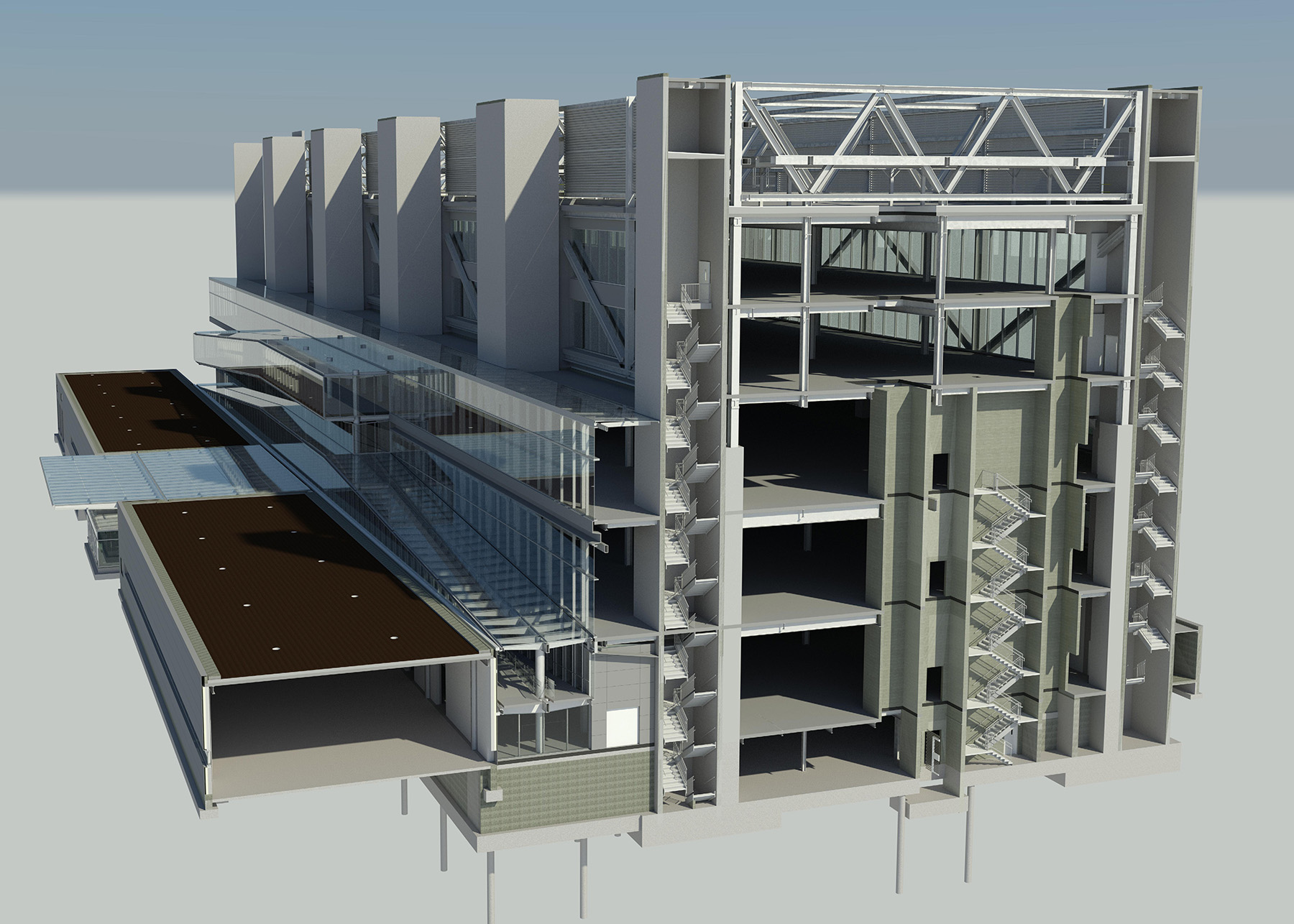
Because these steel trusses are exposed at the roof level, the design had to accommodate thermal expansion and contraction caused by seasonal temperature swings of up to 70 F between the summer and winter cycles of the building, McNamara says. As such, the trusses can grow or shrink by as much as 2 in. throughout the year and become either loading elements themselves or load-resisting elements, he adds.
A series of slide bearings in critical locations enables the building to move independently of the concrete-framed cores and columns that support the trusses, accommodating thermal changes as well as possible seismic or wind loadings, McNamara says.
Cores and columns
The cores and columns that support the trusses consist of seven structural cores on the north side of the building and four on the south side plus three large concrete columns to supplement the southside cores. Each of the cores and columns is located along the perimeter of the upper two floors and roof and exposed to view from the exterior. The building steps out at the lower two floors and encompasses most of the cores from the ground through third floor.
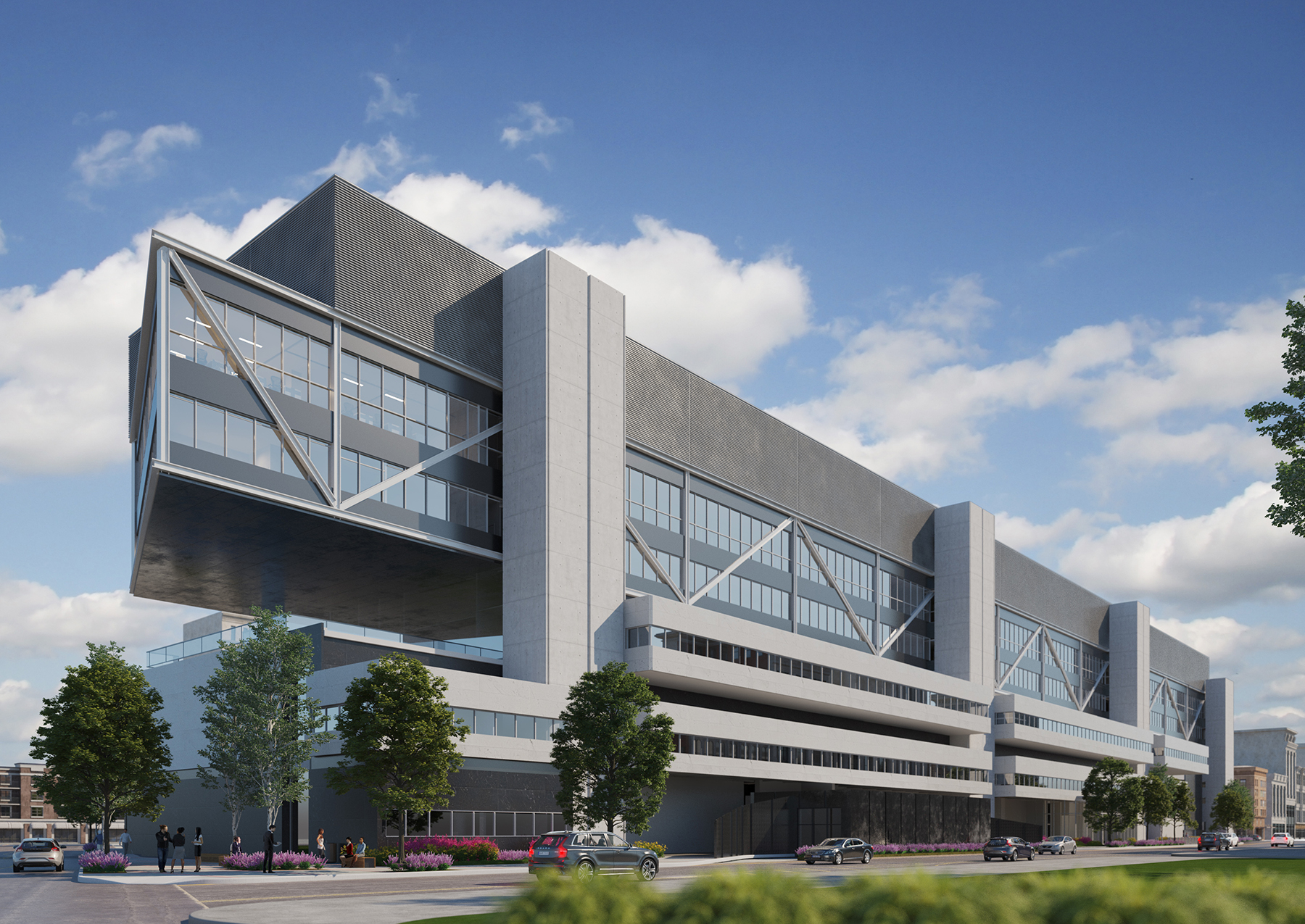
Each core features elevators and stairs surrounded by walls that vary in thickness, mostly from 12 in. to 14 in., with some thinner areas to accommodate architectural elements, McNamara notes. Two of the southside columns are square in plan, measuring 42 in. by 42 in., while the third — exposed — column is round for aesthetic reasons and measures 60 in. in diameter, McNamara explains.
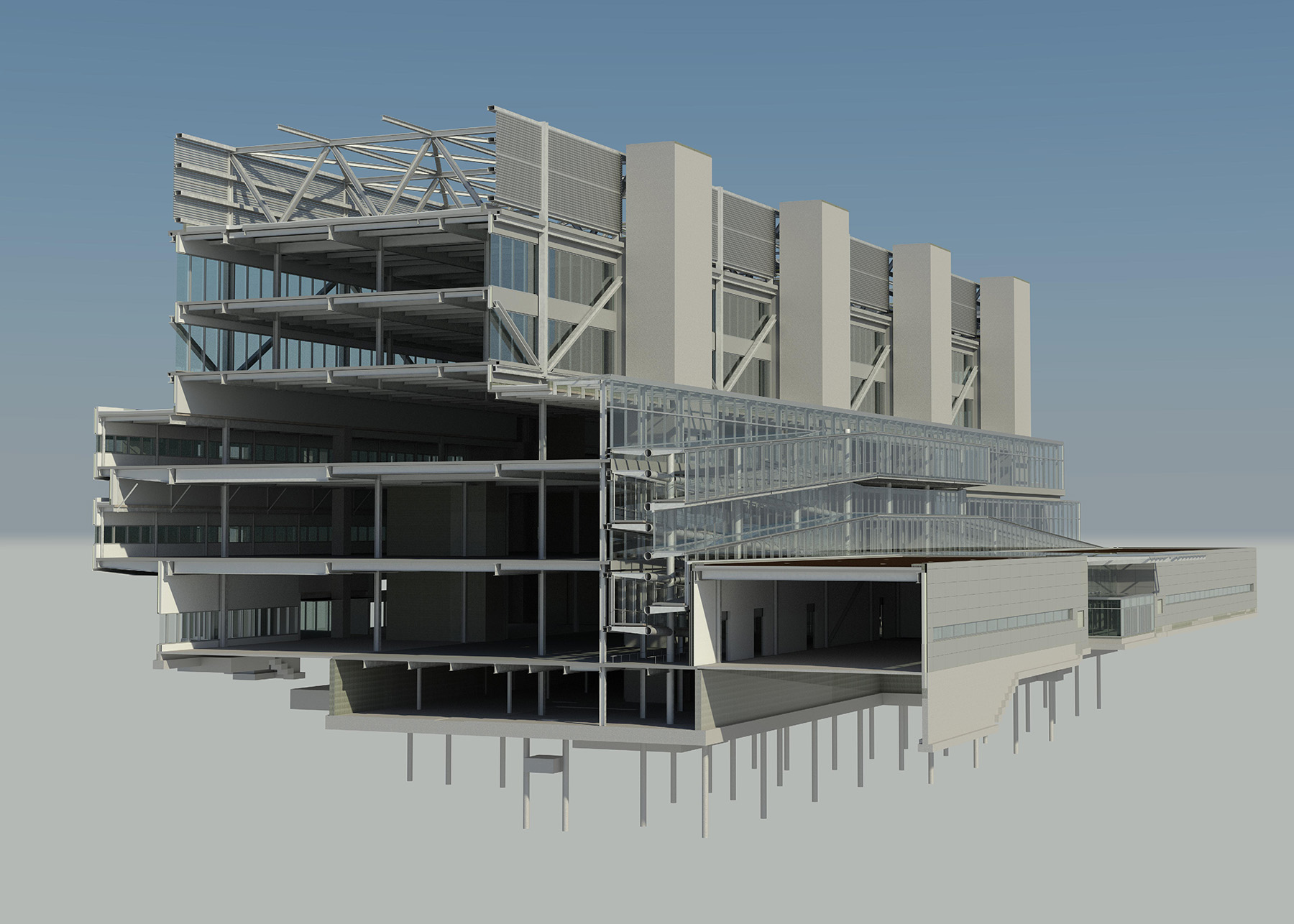
The complex is founded on rock with a concrete pressure mat that measures as much as 6 ft thick in key locations, such as beneath the structural cores. The foundation system includes rock anchors, spaced 25 ft apart across the footprint of the site, to resist hydrostatic pressures, McNamara notes. Other site challenges included the presence of two large tunnels beneath the garage, including one that dated to the 1800s, that had to be carefully spanned across.
On the north side of the main building are two smaller, steel-framed structures: the Surrogate Court building, which features green roof spaces, plus a three-story ramp structure between the Surrogate building and the main building.
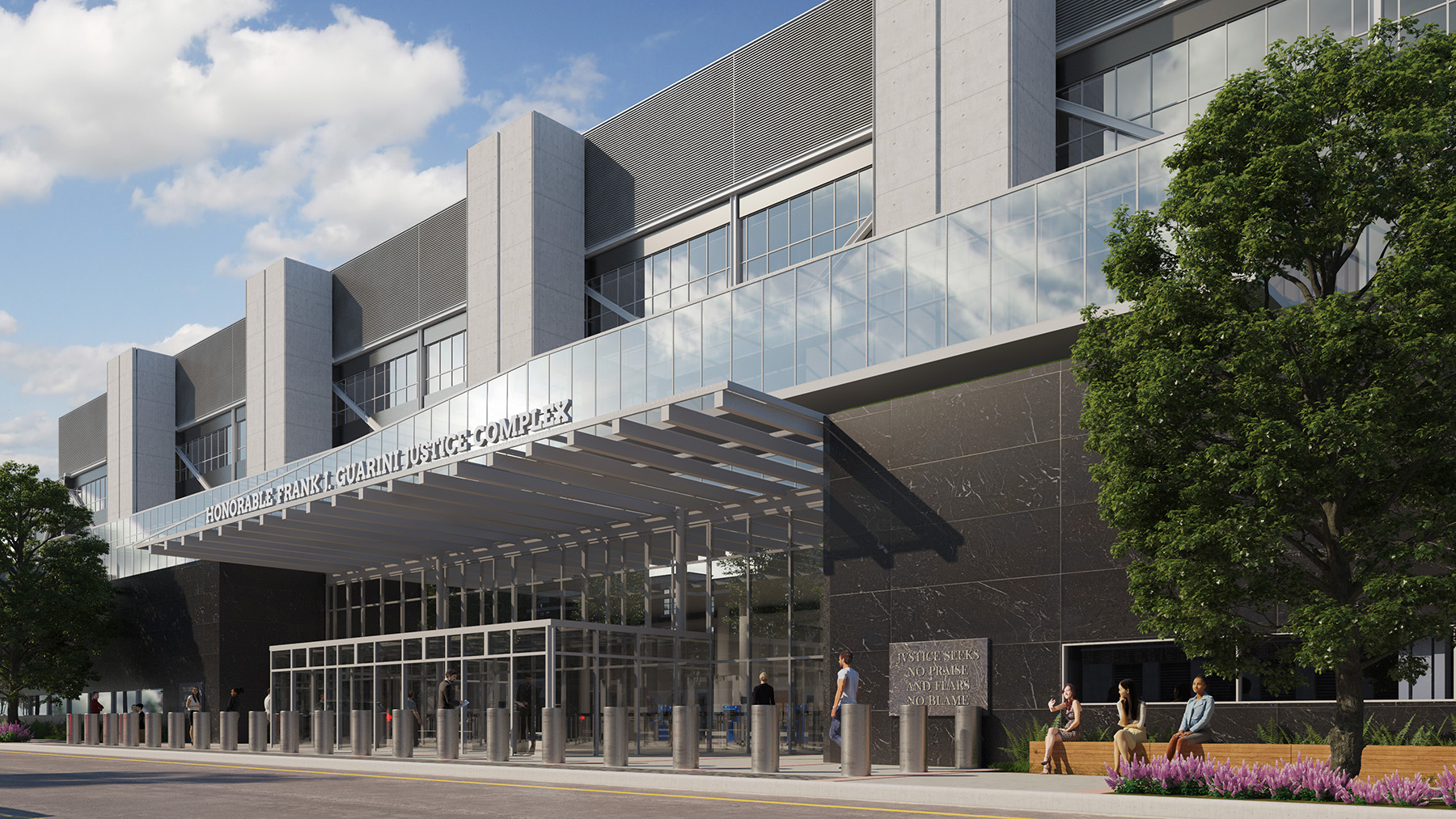
The glazed ramp structure features a series of round hollow structural section steel elements that create a large spine down the middle of the ramp, supporting cantilevered tapered members on the floor and roof, which is also glazed. Resembling a large glass jewel box, the ramp was a complex structure that required rigorous vibration analysis so that visitors would not “feel like they’re walking on a diving board,” notes McNamara.
Security and schedule
Because of the security needs of the justice complex, the facility has a separate entrance for transporting prisoners. To keep the site secure, this area features steel-plated doors and hardened sections of walls. In addition, a hardened portion of the main building’s fourth floor is above part of the garage.
The garage features shorter floor-to-ceiling heights than the main building, enabling the five-story main building to extend over the six-story garage, McNamara notes. The extended portion of the main building’s fourth floor was designed to accommodate both an upward force from a large explosion and the rebound force from a shock wave coming in the opposite direction, McNamara explains.
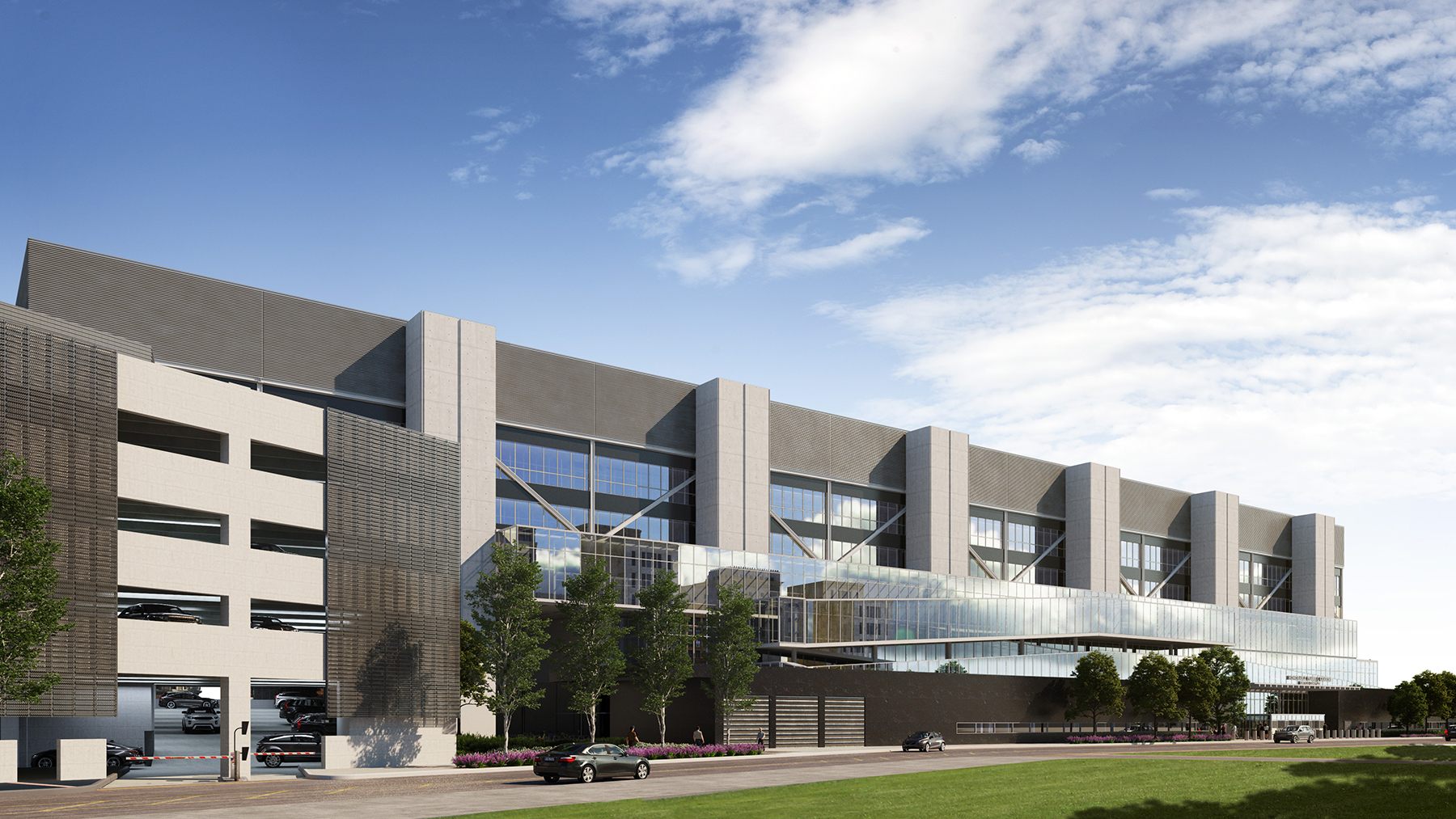
The Guarini justice complex was a complicated, fast-tracked project that required the engineers to complete design documents out of the usual order — such as developing the structural steel packages before the sizes of the mechanical systems units had been determined, notes Anthony Naccarato, P.E., S.E,. F.ASCE, the president of O’Donnell & Naccarato. Moreover, it was a period when steel prices were rising sharply and firms were struggling to adapt to office closures and remote work during the COVID-19 pandemic, Naccarato adds.
The $317 million design-build project is led by Terminal Construction Corp., of Wood-Ridge, New Jersey. Rafael Viñoly Architects is the design consultant, also known as the bridging architect, for the owner, the Hudson County Improvement Authority. Netta Architects, of Mountainside, New Jersey, is the architect of record, and MAST Construction Services Inc., of Little Falls, New Jersey, is the construction manager.
Other firms involved in the project include Mueser Rutledge Consulting Engineers, of New York City, which provided geotechnical services; Remington & Vernick Engineers, of Cherry Hill, New Jersey, which served as the civil and site engineer and landscape architect; and Protection Engineering Consultants, of Dripping Springs, Texas, which provided protective and blast design engineering.
The facility is expected to open next year.
This article first appeared on Civil Engineering Online.



